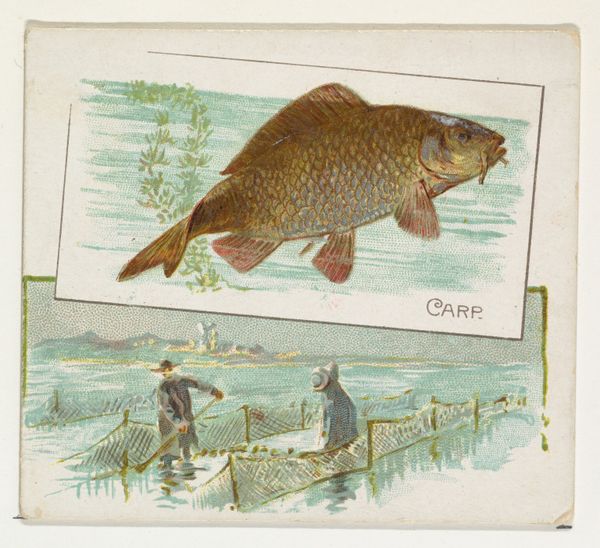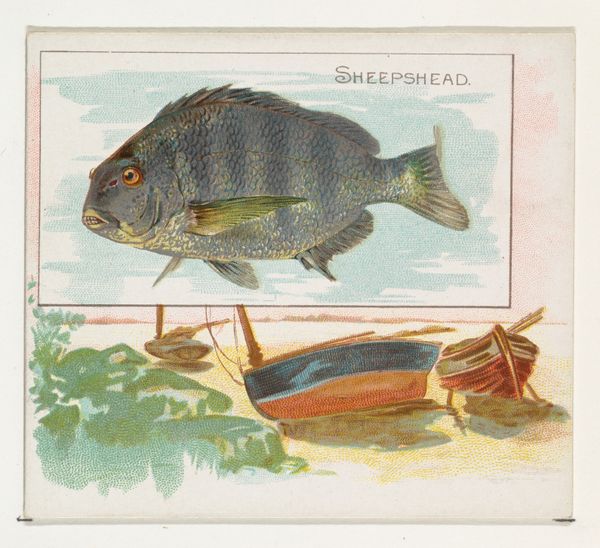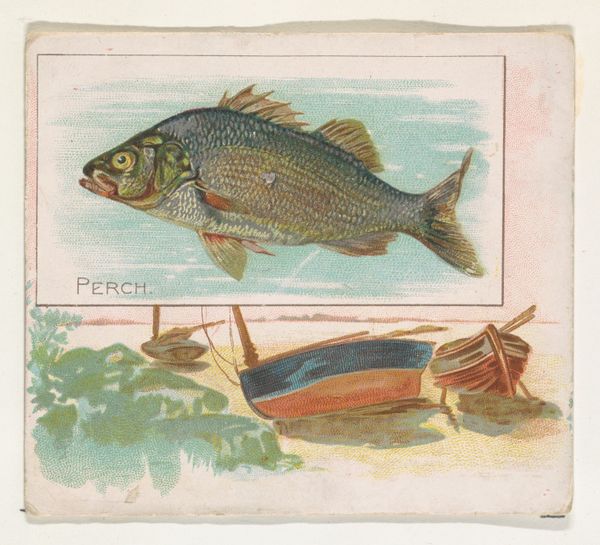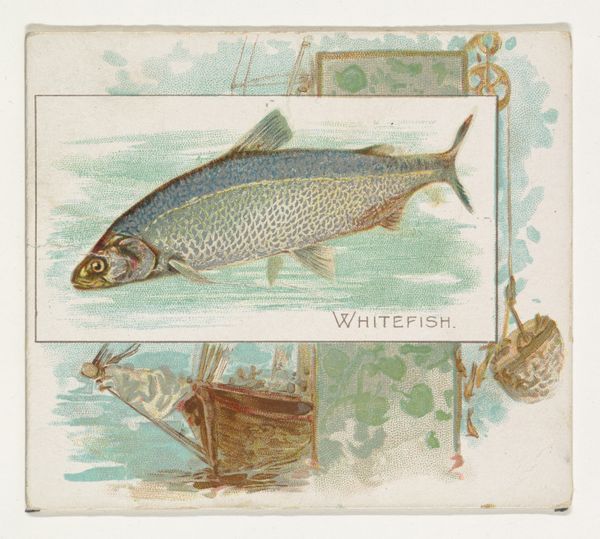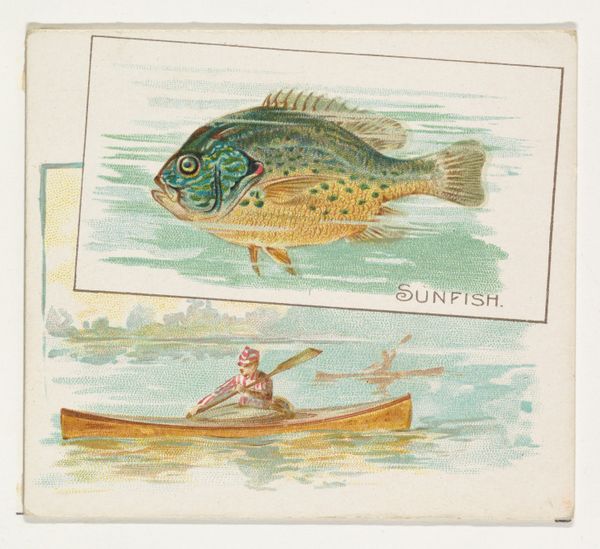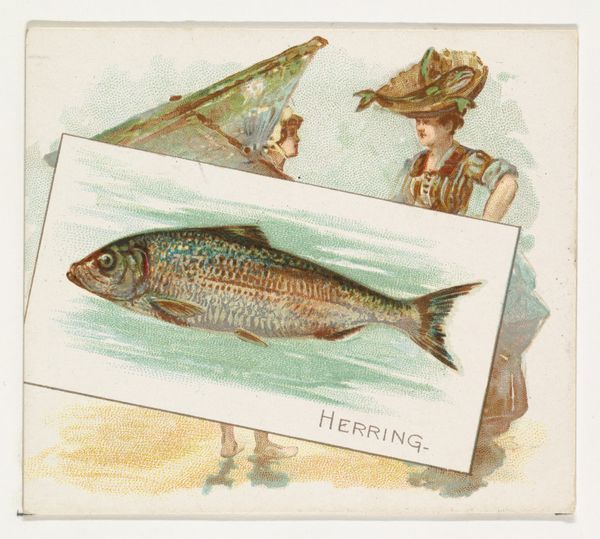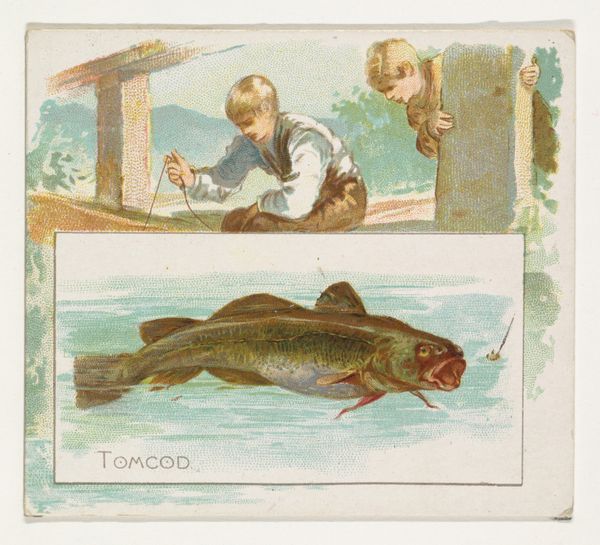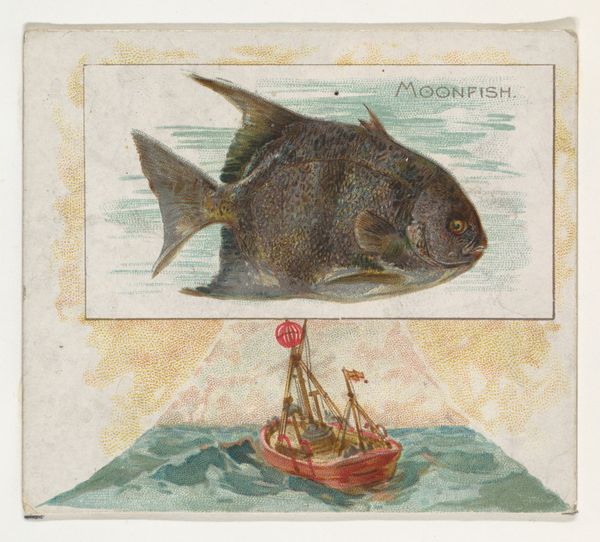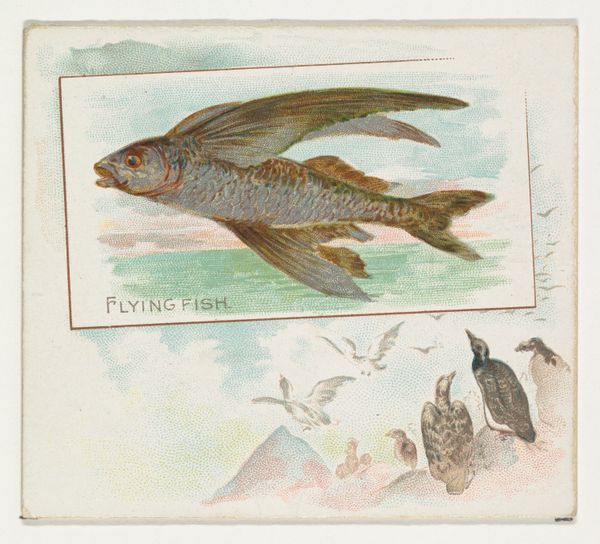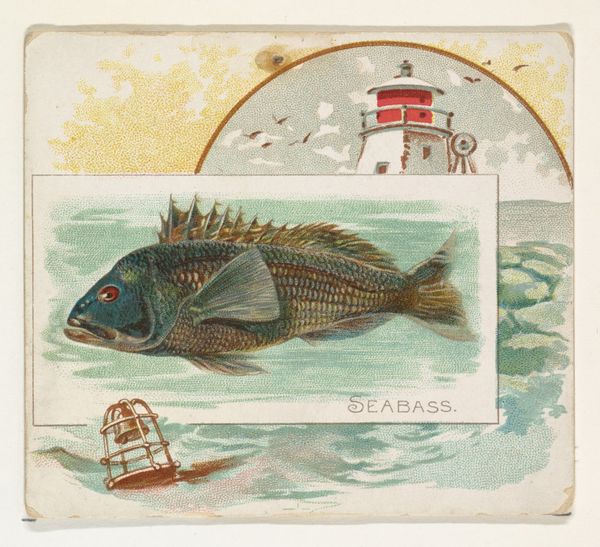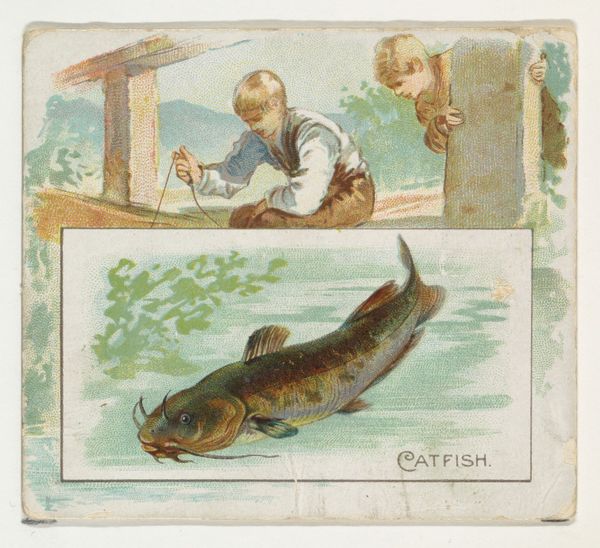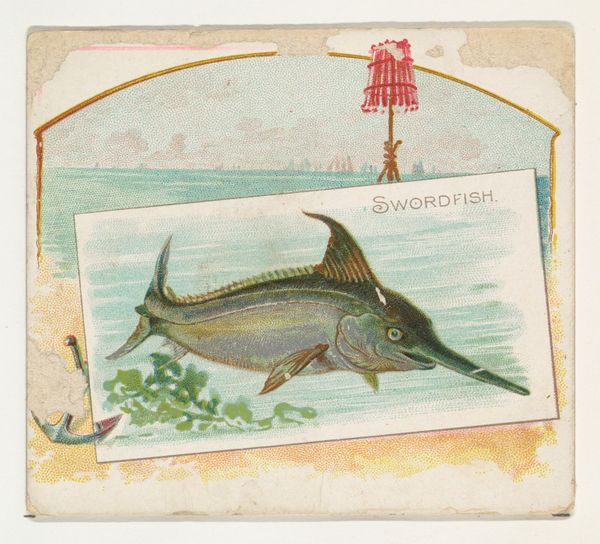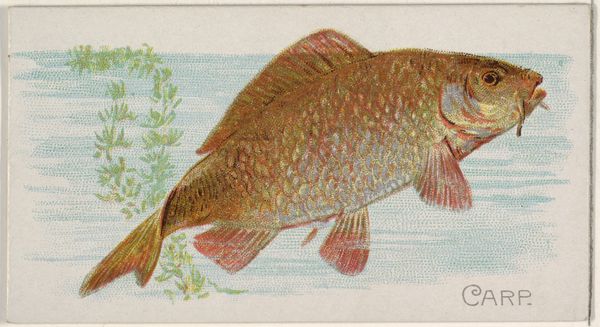
Goldfish, from Fish from American Waters series (N39) for Allen & Ginter Cigarettes 1889
0:00
0:00
Dimensions: Sheet: 2 7/8 x 3 1/4 in. (7.3 x 8.3 cm)
Copyright: Public Domain
Curator: What a peculiar yet captivating print. I feel like I'm looking at a specimen card, meticulously crafted. Editor: Exactly! It’s an advertisement trading card, part of a series of fish drawn for Allen & Ginter Cigarettes in 1889. It’s called “Goldfish, from Fish from American Waters series.” What jumps out is the intense orangey-red pigment used for the fish. Given the ubiquity of tobacco at the time, I wonder about the pigment sourcing, mass-production of printing, and paper quality. Curator: It’s interesting that the artist or printmaker uses an approach we typically associate with ukiyo-e. The careful depiction of flora, fauna and daily labor reminds me of Hokusai. I wonder if the intent was to evoke something akin to nature appreciation? Editor: That’s certainly one interpretation. But let's not forget this image's original context as a promotional item. This card, with its drawing and colour pencils, wasn't simply meant to depict the world. It had to grab the viewer’s attention and create a sense of aspirational refinement tied to tobacco. Curator: Perhaps that perceived refinement extends further? Goldfish are a popular pet. Their color is a symbol for wealth and good fortune. By extension, does this signal that smoking this brand promises that consumer an entrance to a leisured class? Editor: Interesting, since that aligns so nicely with consumerism! I’m interested in the process. These would have been printed en masse using techniques of colour lithography which allowed cheap and reliable images to reach all corners of the market. Curator: But even within commercial imagery, certain symbols have a life beyond their immediate purpose. This particular fish, divorced from the advertisement, it exists in a fascinating space between scientific document and lucky charm. Editor: I see your point. Whether by design or happenstance, it's remarkable how these mass-produced images acquired secondary readings and associations layered atop their primary commercial use. Curator: An artifact from a very particular cultural and commercial moment that still flickers with symbolic potency today. Editor: Indeed. Examining these production methods illuminates how visual culture intertwines economic forces and aesthetic practices.
Comments
No comments
Be the first to comment and join the conversation on the ultimate creative platform.
